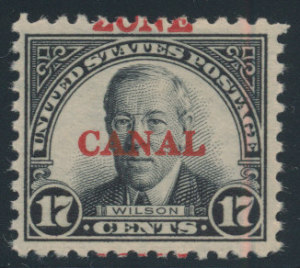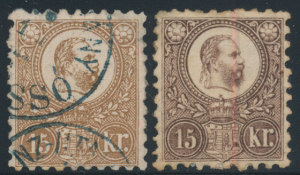A remarkable aspect of philately is that unpopularity breeds further unpopularity. It is truly unusual to see a good collection of nearly any South and Central American country. Brazil, Argentina, Mexico and Cuba are exceptions, but for the other twenty or so countries that make up rest of the southern Americas, collections that are even 75% complete for major Scott numbers are quite rare. The reason is financial but not in the way you might think. Take Ecuador, for instance. It is a country that is just below average in per capita income but with a large middle and upper middle class and several large cities (philatelic popularity is related to rates of urbanization). There are few real rarities by price among its stamps. Its issuing policy is conservative and appropriate. It should have a decent number of domestic collectors as well as an active expatriate collecting community and yet I can't remember the last time I've see a mostly complete Ecuador collection. The same is true of most
Monthly Archives: September 2021
- Posted September 29, 2021in NewsRead more »
- Posted September 25, 2021in NewsRead more »
The most basic decision that most collectors make is whether to collect stamps mint or used. In the very earliest stages of collecting either will do and, at the very highest stages, finances often force either to do. But most collectors start saving both and then gravitate to one or the other. The decision comes down to a calculation. Used stamps are usually cheaper and require less care in mounting and handling. If I were putting away stamps long term for an investment portfolio I would only select used as with mint stamps gum grading standards have changed dramatically over the years and are likely to do so further in the future. Gum can degrade over time if not stored carefully and even the smallest amount of humidity can cause toning. Since so much of the value of a mint stamp today is in perfect gum I wouldn't want to have to worry about this as a long term investment. Used stamps are easy to store and harder to damage. You probably shouldn't try this at home but if you ever have in
- Posted September 22, 2021in NewsRead more »
For many years in the property market is has been said that there are three things that influence prices and will insure investors a good return-location, location, location. Similarly, the unstated emphasis in stamp investment has been quality with the suggestion that only the finest examples of each stamp will be a good investment. This recent decades have proven that belief wrong in the stamp world.
Here is what has happened. In the early years of this decade high quality graded certified material saw a great run up in price. The fetishization of common stamps in "100" graded condition was ridiculous and many common stamps sold for hundreds of times what any sane collector would pay for them. This market has completely collapsed, mainly because few collectors were involved in it in the first place. That market was driven by a west coast philatelic expertization service that liked the fees it - Posted September 15, 2021in NewsRead more »
Of the major world wide powers in the philately era (that is since 1840) the least imperialistic has been the United States. Great Britain and France had between them hundreds of imperial philatelic entities. German was a big player and even Italy, which had more of an appetite for conquest than the digestion, had fifty or more imperial philatelic areas for which she issued stamps. Partly because our own internal markets were so large, partly because of immigration, partly because of endless land to be developed and maybe a bit because of our democratic aspirations, America was a far smaller player in the Imperial game than our European competitors. This changed a bit in the late Nineteenth Century when the Spanish American war gave America three colonies - the Philippines, Cuba and Puerto Rico. These colonies were largely not-for- profit imperial ventures. Two other colonies were more commercial and trade driven-the Canal Zone and the Danish West Indies. A canal through the Isthmus of P
- Posted September 08, 2021in NewsRead more »
If philately were an academic discipline, there would be several basic elements of understanding that stamp majors would have to master before moving to graduate level courses. High on this list would be a basic understanding of printing methods. There are many methods of transferring ink from plate to paper (and, now, even the word "plate" is far too restrictive for what amounts to a high speed ink spraying process that looks to the paper receiving it more like a car wash than a printing process), but the major printing processes all boil down to two major types-engraving, where ink is squeezed from recessed lines on the plate onto the paper, and litho-typography, in which a flat layer of ink is pressed onto the sheet.
Engraving was the preferred method of printing stamps in the early days of philately as it was a far harder process for counterfeiters to imitate convincingly. But the major te - Posted September 01, 2021in NewsRead more »
The first American Philatelic Society certificate was issued over a hundred years ago and it was for a US Occupation of Cuba issue. Following the standards of the time the certificate simply said that the stamp was genuine. The first certificates took their role as "certificates of genuineness" seriously. They said nothing about the quality of the stamps, often not even mentioning if the gum was genuine or not and they certainly never graded the stamps. By about 1930 it was common to see the issue of gum addressed on Philatelic Foundation certificates, though this practice was not mandatory and many regummed stamps were passed as og. About this time too, certificates began to address the issue of quality with major repairs being mentioned for the first time. It wasn't until the late 1980's that hinging became a matter to be passed on by experts and the first NH certificate were issued by the Philatelic Foundation in the late 1980s. The greatest changes in stamp certificate history began


